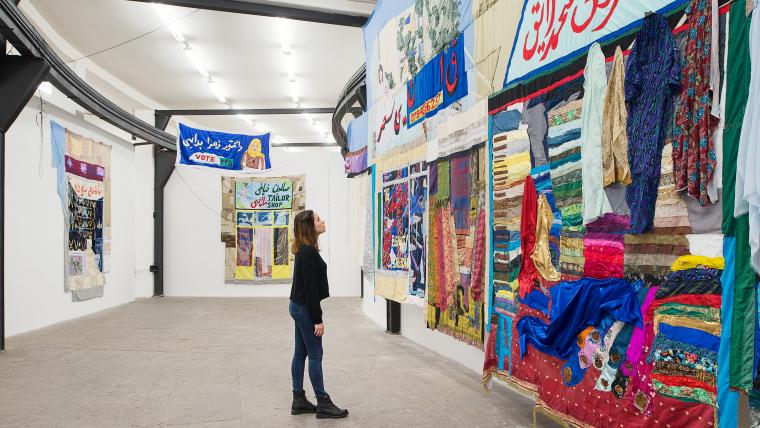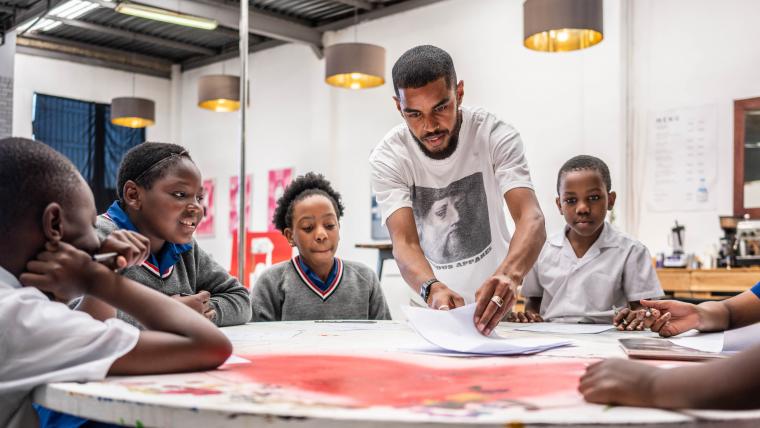
The textile artist weaving the advancement of Afghan women into history
At age seven, Hangama Amiri and her family fled Afghanistan. “When the Taliban took power in 1996, life was very difficult to continue and very dangerous for a woman to live,” Amiri says. After settling in Canada, she grew up to be a textile artist. Using her craft to weave a connection to her memories of Kabul, Amiri reminisces on the Afghan market she lived close to in her youth. Her body of work Bazaar, A Recollection of Home acknowledges the progress women have made in her home country in the last 20 years – between Taliban rule.
Amiri recalls the vibrant bazaar where locals enticed passers-by with their goods. Together with the women in her family, she would set out to explore the scene, traversing from store to store. Despite the fact that most goods and services were aimed at women, many businesses were solely owned by men. When the Taliban regime fell in 2001, a surge of female entrepreneurs emerged. They were afforded the opportunity to manage beauty parlours, tailor shops, and restaurants. Inspired by their tenacity and determination for success, Amiri celebrates them with her textile portraits. “I’m reframing the Afghan feminist,” she says.
Her work comes together like paintings, woven in colourful and patterned silks, satin, and chiffon – fabrics which revive memories of her childhood. By stitching the threads of her identity, she found a way to hone a link to her heritage. Amiri’s tapestries document the social and cultural shifts in Afghanistan and how these changes led to women’s advancement.
But today, the future of women in the country is uncertain as Taliban rule returned in 2021. Amiri fears the threats women will face and the damage this will have on the progress they've made. Her series portrays how communities flourish under conditions that do not limit its people, and she’s chosen to thread women’s rightful place in business and society into history. “I hope my work can serve as some sort of archival records,” Amiri says.
Footage and photos by Hangama Amiri, Domenico Catano, Orysia Zabeida, Dewi Tan, and Roberto Apa for T293 gallery were used in the creation of this film.






























Please sign in to leave a comment